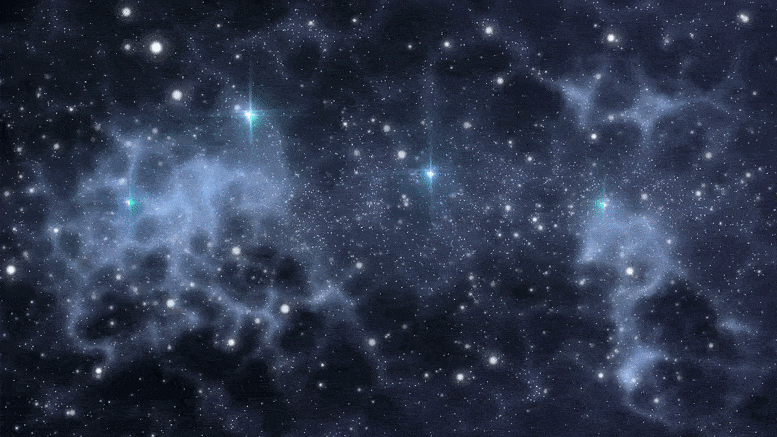
Boson clouds, consisting of elusive ultralight subatomic particles, are proposed as a potential source of dark matter, which constitutes about 85% of the Universe’s matter.
The hunt for gravitational waves, ripples in space and time caused by major cosmic cataclysms, could help solve one of the Universe’s other burning mysteries — boson clouds and whether they are a leading contender for dark matter.
Researchers are using powerful instruments, like the advanced Laser Interferometer Gravitational-Wave Observatory (LIGO), advanced Virgo, and KAGRA, that detect gravitational waves up to billions of light-years away to locate potential boson clouds.
Boson clouds, made up of ultralight subatomic particles that are almost impossible to detect, have been suggested as a possible source of dark matter — which accounts for about 85 percent of all matter in the Universe.
Now a major new international study carried out in the LIGO-Virgo-KAGRA collaboration and co-led by researchers from The Australian National University (ANU), offers one of the best leads yet to hunt down these subatomic particles by searching for gravitational waves caused by boson clouds circling black holes.
Dr. Lilli Sun, from the ANU Centre for Gravitational Astrophysics, said the study was the first all-sky survey in the world tailored to look for predicted gravitational waves coming from possible boson clouds near rapidly spinning black holes.
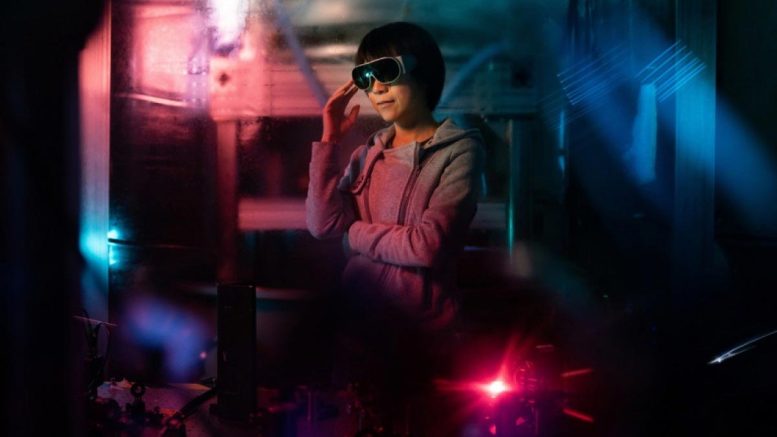
Dr. Lilli Sun is on the hunt for boson clouds — a key contender for dark matter. Credit: Tracey Nearmy/ANU
“It is almost impossible to detect these ultralight boson particles on Earth,” Dr. Sun said.
“The particles, if they exist, have extremely small mass and rarely interact with other matter — which is one of the key properties that dark matter seems to have. Dark matter is material that cannot be seen directly, but we know that dark matter exists because of the effect it has on objects that we can observe.
“But by searching for gravitational waves emitted by these clouds we may be able to track down these elusive boson particles and possibly crack the code of dark matter. Our searches could also allow us to rule out certain ultralight boson particles that our theories say could exist but actually don’t.”
Dr. Sun, also an Associate Investigator at the ARC Centre of Excellence for Gravitational Wave Discovery (OzGrav), said gravitational wave detectors allowed researchers to examine the energy of rapidly rotating black holes extracted by such clouds if they exist.
“We believe these black holes trap a huge number of boson particles in their powerful gravity field, creating a cloud corotating with them. This delicate dance continues for millions of years and keeps generating gravitational waves that hurtle through space,” she said.
While the researchers haven’t yet detected gravitational waves from boson clouds, Dr. Sun said gravitational wave science had “opened doors that were previously locked to scientists.”
“Gravitational-wave discoveries not only provide information about mysterious compact objects in the Universe, like black holes and neutron stars, they also allow us to look for new particles and dark matter,” she said.
“Future gravitational wave detectors will certainly open more possibilities. We will be able to reach deeper into the Universe and discover more insights about these particles.
“For example, the discovery of boson clouds using gravitational wave detectors would bring important insights about dark matter and help advance other searches for dark matter. It would also advance our understanding of particle physics more broadly.”
In another significant breakthrough, the study also shed more light on the chance of boson clouds existing in our own galaxy by taking into consideration their ages.
Dr. Sun said the strength of any gravitational wave depends on the age of the cloud, with older ones sending out weaker signals.
“The boson cloud shrinks as it loses energy by sending out gravitational waves,” Dr. Sun said.
“We learned that a particular type of boson cloud younger than 1,000 years is not likely to exist anywhere in our galaxy, while clouds that are up to 10 million years old are not likely to exist within about 3,260 light-years from Earth.”
Reference: “All-sky search for gravitational wave emission from scalar boson clouds around spinning black holes in LIGO O3 data” by The LIGO Scientific Collaboration, the Virgo Collaboration, the KAGRA Collaboration: R. Abbott, H. Abe, F. Acernese, K. Ackley, N. Adhikari, R. X. Adhikari, V. K. Adkins, V. B. Adya, C. Affeldt, D. Agarwal, M. Agathos, K. Agatsuma, N. Aggarwal, O. D. Aguiar, L. Aiello, A. Ain, P. Ajith, T. Akutsu, S. Albanesi, R. A. Alfaidi, A. Allocca, P. A. Altin, A. Amato, C. Anand, S. Anand, A. Ananyeva, S. B. Anderson, W. G. Anderson, M. Ando, T. Andrade, N. Andres, M. Andrés-Carcasona, T. Andrić, S. V. Angelova, S. Ansoldi, J. M. Antelis, S. Antier, T. Apostolatos, E. Z. Appavuravther, S. Appert, S. K. Apple, K. Arai, A. Araya, M. C. Araya, J. S. Areeda, M. Arène, N. Aritomi, N. Arnaud, M. Arogeti, S. M. Aronson, K. G. Arun, H. Asada, Y. Asali, G. Ashton, Y. Aso, M. Assiduo, S. Assis de Souza Melo, S. M. Aston, P. Astone, F. Aubin, K. AultONeal, C. Austin, S. Babak, F. Badaracco, M. K. M. Bader, C. Badger, S. Bae, Y. Bae, A. M. Baer, S. Bagnasco, Y. Bai, J. Baird, R. Bajpai, T. Baka, M. Ball, G. Ballardin, S. W. Ballmer, A. Balsamo, G. Baltus, S. Banagiri, B. Banerjee, D. Bankar, J. C. Barayoga, C. Barbieri, B. C. Barish, D. Barker, P. Barneo, F. Barone, B. Barr, L. Barsotti, M. Barsuglia, D. Barta, J. Bartlett, M. A. Barton, I. Bartos, S. Basak, R. Bassiri et al., 9 May 2022, Physical Review D.
DOI: 10.1103/PhysRevD.105.102001
arXiv:2111.15507





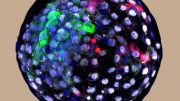

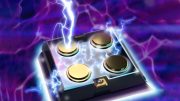
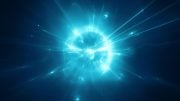
As this article points out, the boson clouds may or may not be there, and if they’re there may or may not generate gravitational waves that may or may not be Dark Matter. Also, these boson clouds have to be everywhere, not just around Black Holes.
Another possibility, from a view of String Theory, is that Dark Matter appears to us as an effect of string/anti-string annihilations. As you may know, quantum mechanics requires that strings must be formed as pairs in the quantum foam – a string and an anti-string – that immediately annihilate each other. Quantum mechanics also requires both the string and anti-string to be surrounded by “jitters” that reduce their monstrous vibrating energies. What if this jitter remains for a fraction of an instant after their string/anti-string annihilations? This temporary jitter would be seen by us as matter, via E=mc2, for that instant before it too returns to the foam. That’s why we never see it – the “mass” lasts only for that instant but is repeated over and over and over, all over. Specifics on this can be found in my YouTube, Dark Matter – A String Theory Way at https://www.youtube.com/watch?v=N84yISQvGCk
Both comments are interesting 🤔. Simple commonsense, research n PhD.talk of this 50plus years. This is concluded makes sense. 🎄 space is wonderful
you know i have question to argue on that.. idk if you have ever taken Lsd before but it allows you to see all sorts of particles down to chemical structure make ups.so its just a very interesting subject to argue an question but i believe if you take a correct dose its like putting in a contact lense and being able to see more clear.. Francis Crick lsd and the double Helix.. pretty interesting. pretty interesting being able to see particles and chemical structures in the air pretty hard to deny or explain. we should talk if your interested maybe you could raise some questions in an article with a voice.
I wonder how these bosons would interact together in large cosmic fields. Would the cosmic boson field have its own localized spin? How would the spin of a large boson field interact with the measurable cosmic microwave background(CMB)? Could variations in the CMB be correlated with increasing/decreasing localized boson fields? A hypothetically uniform boson field the size of log10(parsecs)^3 would contain a non zero number of galaxies. The galaxies would not all rotate in the same direction. How would boson fields these sizes interact with each other if there spin axis were not perfectly aligned?